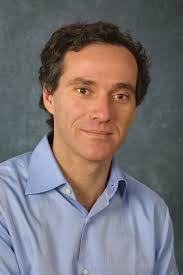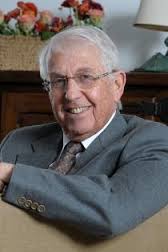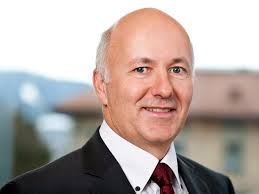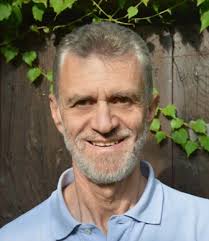Nonlinear control without PDEs
Professor Alessandro Astolfi
Head of Control and Power Research Group
Professor of Non-Linear Control Theory
Imperial College, London
http://www.imperial.ac.uk/people/a.astolfi
Several nonlinear control analysis and design problems, such as stability and stabilization problems, adaptive control problems, model reduction and observer design, optimal/robust control and game theory problems, rely upon the computation of solutions of partial differential equations (PDEs). These could be linear PDEs, such as those encountered in stability, stabilization, adaptive control and observer design; nonlinear PDES, such as the Hamilton Jacobi PDEs; or coupled PDES, such as those arising in game theory and in mean field games. In this talk we present a method to replace PDEs with algebraic equations at the expense of sacrificing performance (in a measurable way). The method is shown to be sufficiently flexible to deal with a wide range of problems and to provide solutions which are more accurate than those obtained using series expansion methods or other numerical schemes for the solutions of PDEs. Examples in the areas of engine control, multi agent systems and state estimations illustrate the theory.
Alessandro Astolfi was born in Rome, Italy, in 1967. He graduated in Electrical Engineering from the University of Rome in 1991. In 1992, he joined ETH-Zurich, where he obtained a M.Sc. in Information Theory in 1995 and the PhD degree with Medal of Honor in 1995 with a thesis on discontinuous stabilization of nonholonomic systems. In 1996 he was awarded a PhD from the University of Rome ”La Sapienza” for his work on nonlinear robust control. Since 1996 he has been with the Electrical and Electronic Engineering Department of Imperial College London, London (UK), where he is currently Professor in Nonlinear Control Theory and Head of the Control and Power Group. From 1998 to 2003 he was also an Associate Professor at the Dept. of Electronics and Information of the Politecnico of Milano. Since 2005 he has also been a Professor at Dipartimento di Ingegneria Civile e Ingegneria Informatica, University of Rome Tor Vergata. He has been a visiting lecturer in ”Nonlinear Control” in several universities, including ETH-Zurich (1995-1996); Terza University of Rome (1996); Rice University, Houston (1999); Kepler University, Linz (2000); SUPELEC, Paris (2001).
His research interests are focused on mathematical control theory and control applications, with special emphasis for the problems of discontinuous stabilization, robust and adaptive control, game theory, observer design and model reduction. He is the author of more than 120 journal papers, of 30 book chapters and of over 240 papers in refereed conference proceedings. He is the author (with D. Karagiannis and R. Ortega) of the monograph ”Nonlinear and Adaptive Control with Applications” (Springer-Verlag).
He is the recipient of the IEEE CSS A. Ruberti Young Researcher Prize (2007) and of the IEEE CSS George S. Axelby Outstanding Paper Award (2012). He is a ”Distinguished Member” of the IEEE CSS. He is a Fellow of the IEEE and of the IET and the recipient of the 2015 Sir Harold Hartley Medal, for outstanding contribution to the technology of measurement and control, from the Institute of Measurement and Control.
He is Associate Editor of Automatica, the International Journal of Control and the International Journal of Adaptive Control and Signal Processing. He is Senior Editor of the IEEE Trans. on Automatic Control and Editor-in-Chief of the European Journal of Control. He has also served in the IPC of various international conferences. He is currently the Chair of the IEEE CSS Conference Editorial Board.
Unmanned Vehicles Systems – From Necessity to Maturity
Dr. David Harari
Israeli Aerospace Industries
 Since the Antiquity, the need for intelligence during peace and war times has been a real objective for every human group and every country. When we began in Israel, 40 years ago, to think how to develop our local Unmanned Air Vehicle System for real-time information, it was like making a bet for the future. The main questions were: Will we be entirely successful in developing such a new information system? Will such a system contribute to reaching needed objectives and to bringing back substantial information? First operational experiments showed that such a system can change the military doctrine giving to the commander on the battlefield, a 4D information tool (the 4th dimension being time). It was a real eye-opener!
Since the Antiquity, the need for intelligence during peace and war times has been a real objective for every human group and every country. When we began in Israel, 40 years ago, to think how to develop our local Unmanned Air Vehicle System for real-time information, it was like making a bet for the future. The main questions were: Will we be entirely successful in developing such a new information system? Will such a system contribute to reaching needed objectives and to bringing back substantial information? First operational experiments showed that such a system can change the military doctrine giving to the commander on the battlefield, a 4D information tool (the 4th dimension being time). It was a real eye-opener!
During past decades, industry efforts focused on developing basic technologies and operational concepts, mainly in the military Unmanned Systems area. However, during the recent past, we have observed a change in orientation and expansion of the field into the civil sector, definitely showing transition to a higher maturity level. Three decades after the first operational use over a battlefield, progress is on-going in several areas, from standards to regulations, from a simple day TV camera to technical enhancements in different intelligence payloads, and in a variety of operational uses and applications on ground, air, sea-surface and underwater. The prospect of potential civil applications and civil missions is great and non-military use of UAVs represents a tremendous opportunity that has yet to be fully developed; there is growing demand despite the complexity of the problems to be solved. As such, unmanned systems are impacting the way we: secure the world; meet humanitarian needs; respond to natural disasters; monitor crime; detect areas of intense heat; improve hurricane forecasts; inspect various infrastructures; support archeology research, etc. The international association Medecins sans Frontieres is experimenting with using unmanned aircraft to transport medical supplies and samples in the remote regions of Papua New Guinea, where access to clinics for treatment of diseases like tuberculosis is difficult. Agriculture is finding new uses for airborne robots, including monitoring plant health and soil moisture, spraying fertilizer and seed, inspecting fences and exterminating pests. TV companies, like CNN, have been relying on small unmanned aircraft to add depth to news coverage. In the maritime sector, robotic technologies are developed for both sea-surface and underwater applications. Unmanned and autonomous vehicles are used for Hydrographic and Oceanographic applications and also in the Oil and Gas Industry where such systems are used for subsea explorations. Ground robotics, both for civil and military uses are also showing growth potential. This is the value of adaptability of such systems and it has saved military and civilian lives.
The unmanned systems market is changing at a rapid pace. The civil market is expanding rapidly and is expected to ultimately shrink the military market. Eventually, the military market will become another customer of the commercial side, driving down cost and increasing innovation.
Dr. David Harari Dr. Harari is an Electrical & Mechanical Engineer and has a PhD degree in Physics and Computer Systems Engineering from Paris University, France. He has held several positions in Israel Aerospace Industries (IAI). During a period of 16 years he developed the Unmanned Air Vehicle Systems (UAV) activities at IAI and after this period, he was the IAI Deputy Vice President for R&D and the President of IAI’s European subsidiary, European Advanced Technologies (EAT), located in Brussels, Belgium. He is the Co-Chairman of the French-Israeli High Council for Science and Technology and the Chairman of the Board of Tactical Robotics Ltd. David Harari has received many international awards: The Israel Defense Award; The Israel Marketing Award; The Unmanned Aerial Vehicles International Pioneer U.S.A. Award; The French National Order of Merit; The French Legion of Honor; An award for life accomplishment from the Israeli Engineers Federation. He is listed by the “Industries et Techniques” French magazine as one of the scientists that has most influenced the scientific world in the last decades and was also listed by the French Economist Magazine “Challenges” as one of the 100 personalities who change the world. In 2011, David Harari received the Israel Prize in the field of engineering; this award, handed out by the State of Israel, is largely regarded as the state’s highest honor. He is member of the Board of Directors of the Chamber of Commerce & Industry Israel-France and the representative in Israel of the Forum Francophone des Affaires.
How we can Halt a Runaway Climate
 Professor Yannis A. Phillis
Professor Yannis A. Phillis
Department of Production Engineering and Management
Technical University of Crete
Chania 73100, Greece
http://www.phillis.tuc.gr/1977.html
Climate change is one of the most urgent problems facing the Earth. Its facets are multiple: environmental, economic, and social, and its consequences could become dire if drastic and concerted action is not taken immediately. Climate change is already exerting a host of stresses on the environment and the society that will intensify with time. In the face of this reality, humanity has done little to avert possible catastrophes. Puzzling as this behavior might appear at first, it can be partially explained by behavioral economics and psychology. The goal of this talk is twofold. First, it investigates the question of whether the UN goal of 2°C temperature rise above preindustrial level is still attainable in an optimal sense and what reductions are needed to achieve it. Second, the paper makes a connection between such reductions and certain behavioral aspects that could make the reductions a reality. These two goals might appear technically distinct – and to some extent, they are. However, there exists a strong cause-and-effect connection between the two since sharp emissions reductions require strong political consensus on the part of politicians, decision makers, and citizens that hinge upon human behavior.
A climate model is used in conjunction with an economic model to examine emissions and temperature dynamics under certain economic growth scenarios. Consumption, carbon emissions, and resulting temperature trajectories are then optimized so that a utility function is maximized with the goal of keeping temperature rise within 2°C above preindustrial levels. Two measures of satisfaction from consumption are considered: a logarithmic utility and a novel, hump-shaped function. The latter is consistent with recent findings about the relation between life satisfaction and income. A meta-analysis follows that links the optimal emissions trajectories with corresponding behavioral requirements. Thus, climate action is presented in a more integral way whereby technical and behavioral attributes are systematically connected. It is demonstrated that:
- the 2°C target is theoretically still achievable, but it hinges upon very drastic measures to be taken almost immediately;
- in a few years we shall exit the 2-degree controllability region and higher temperatures should be expected;
- public cognition of and attitude towards climate change should change in a quantifiable sense;
- this is one of those interdisciplinary problems that need not only hard science and technology to be resolved but also psychology, the humanities and just plain citizens’ action.
Yannis A. Phillis received his diploma in electrical and mechanical engineering from the National Technical University of Athens, Greece, in 1973 and the MSc, Engineer Degree, and PhD degrees in control systems from the University of California at Los Angeles (UCLA) in 1978, 1979, and 1980 respectively. From 1980 to 1986, he was with Boston University, Boston, MA. Since 1986, he has been with the Department of Production Engineering and Management, Technical University of Crete, Chania, Greece, where he is professor and director of the CAM Laboratory. In 1992 and between 2005 and 2007 he was visiting professor at UCLA’s Chemical Engineering Department. In 2008 he was Onassis Foundation Senior Visiting Fellow in the US. His research interests are in stochastic control, discrete-event systems, and applications in manufacturing networks and environmental systems.
Dr. Phillis is a member of the Executive Board of the Journal of Intelligent and Robotic Systems, Advisory Board Member for the IEEE Systems Journal, Associate Editor for the International Journal of Engineering Management, Member of the Editorial Advisory Board for the Environmental Engineering and Management Journal, and was on the Editorial Board of the Encyclopedia of Life Support Systems, and past Editor of the IEEE Robotics and Automation Magazine.
He is the recipient of numerous honors among which Professor of the Year Award at Boston University, 1986; Award by the Academy of Athens for his environmental activities, 2007; Fellow of the Venizelos Research Institute in Greece, 2006; Awards by the Municipalities of Chania and Assini, Greece in 2005 and 2008, respectively for his service to society, science, and letters; Lifetime Achievement Award at the World Automation Conference 2010, Kobe, Japan; and Academic Alumni Professional Achievement Award, UCLA, 2013.
Dr. Phillis was Rector of the Technical University of Crete for 12 years. He has published over 120 scientific papers and four technical books. He is an award winning writer in Greece and the US. He is a Fellow of AAAS; a Senior Member of IEEE; and Member of Sigma Xi; Poets and Writers, USA; P.E.N. Club; and the European Art Center, Athens.
Walking and Flying Robots for Challenging Environments
Prof. Dr. Roland Siegwart
Autonomous Systems Lab
Institute of Robotics and Intelligent Systems
ETH Zurich
Disaster response operations or industrial inspections are among the most rewarding but also very challenging tasks for autonomous mobile robots. While robots are already doing a wonderful job as factory work-horses or floor cleaning devices, operations in highly unstructured and unknown environments, which are typically encountered after disasters, in mines or on offshore oil rigs, are still a major challenge. In this talk, our latest research results in legged and flying robots systems, designed to operate in complex environments, are presented and discussed.
Our electrically powered legged quadruped robots are designed for high agility, efficiency and robustness in rough terrain. This is realized through an optimal exploitation of the natural dynamics and serial elastic actuation. Equipped with laser scanners and cameras, our quadruped StarlETH and ANYmal are able to autonomously find their path through rough terrain, climb stairs and build a 3D map of their environment.
For fast inspection of complex environments, flying robots are probably the most efficient and versatile devices. However, the limited payload and computing power of multi-copters renders autonomous navigation quite challenging. Thanks to our custom designed visual-inertial sensor, real-time on-board localization, mapping and planning has become feasible and enables our multi-copters for advanced rescue and inspection tasks, even in GPS-denied environments.
Overcoming the limited power autonomy and flight range of multi-copters is the main focus of our research in unmanned solar airplanes. Our most recent design of a fixed wing solar airplane with 5.6 m wing span allows for unlimited flight durations, thus enabling search and rescue from the air over large environments. Thanks to on-board visual sensing, these solar airplanes are also capable to fly very close to ground and plan their path around obstacles.
Roland Siegwart (born in 1959) is founding co-director of the Wyss-Zurich and professor for autonomous mobile robots at ETH Zurich. He studied mechanical engineering at ETH, spent ten years as professor at EPFL (1996-06), was vice president of ETH Zurich (2010-14) and held visiting positions at Stanford University and NASA Ames. He is and was the coordinator of multiple European projects and co-founder of half a dozen spin-off companies. He is recipient of the IEEE RAS Inaba Technical Award, IEEE Fellow and officer of the International Federation of Robotics Research (IFRR). He is in the editorial board of multiple journals in robotics and was a general chair of several conferences in robotics including IROS 2002, AIM 2007, FSR 2007 and ISRR 2009. His interests are in the design and navigation of wheeled, walking and flying robots operating in complex and highly dynamical environments.
Uncertainty Randomization in Control Systems
Prof. Dr. Roberto Tempo
CNR-IEIIT
Politecnico di Torino
Italy
http://staff.polito.it/roberto.tempo/
It is well-known that uncertainty leads to a significant performance degradation of control systems. At the beginning of this lecture, we illustrate this fact in the context of Model Predictive Control and discuss two alternative approaches: robust and stochastic. Subsequently, we provide a perspective of randomized techniques to handle uncertain stochastic systems. In particular, we introduce the notion of sample complexity, demonstrate its key role in feedback systems, and study related probabilistic bounds. Regarding control design, we develop a novel robust optimization approach over networks, where multiple processors are distributed among different nodes. The resulting parallel randomized algorithms solve the robust optimization problem very effectively, in particular for control systems consisting of a very large number of design variables.
Roberto Tempo is currently Director of Research of Systems and Computer Engineering at CNR-IEIIT, Politecnico di Torino, Italy. He has held visiting positions at Chinese Academy of Sciences in Beijing, Kyoto University, The University of Tokyo, University of Illinois at Urbana-Champaign, German Aerospace Research Organization in Oberpfaffenhofen and Columbia University in New York. His research activities are focused on the analysis and design of complex systems with uncertainty, and various applications within information technology. On these topics, he has published more than 180 research papers in international journals, books and conferences. He is also a co-author of the book “Randomized Algorithms for Analysis and Control of Uncertain Systems, with Applications,” Springer-Verlag, London, published in two editions in 2005 and 2013.
Dr. Tempo is a Fellow of the IEEE and a Fellow of the IFAC. He is a recipient of the IFAC Outstanding Paper Prize Award for a paper published in Automatica and of the Distinguished Member Award from the IEEE Control Systems Society. He is a Corresponding Member of the Academy of Sciences, Institute of Bologna, Italy, Class Engineering Sciences.
In 2010 Dr. Tempo was President of the IEEE Control Systems Society. He is currently serving as Editor-in-Chief of Automatica. He has been Editor for Technical Notes and Correspondence of the IEEE Transactions on Automatic Control in 2005-2009 and a Senior Editor of the same journal in 2011-2014. He is a member of the Advisory Board of Systems & Control: Foundations & Applications, Birkhauser. He was General Co-Chair for the IEEE Conference on Decision and Control, Florence, Italy, 2013 and Program Chair of the first joint IEEE Conference on Decision and Control and European Control Conference, Seville, Spain, 2005.
